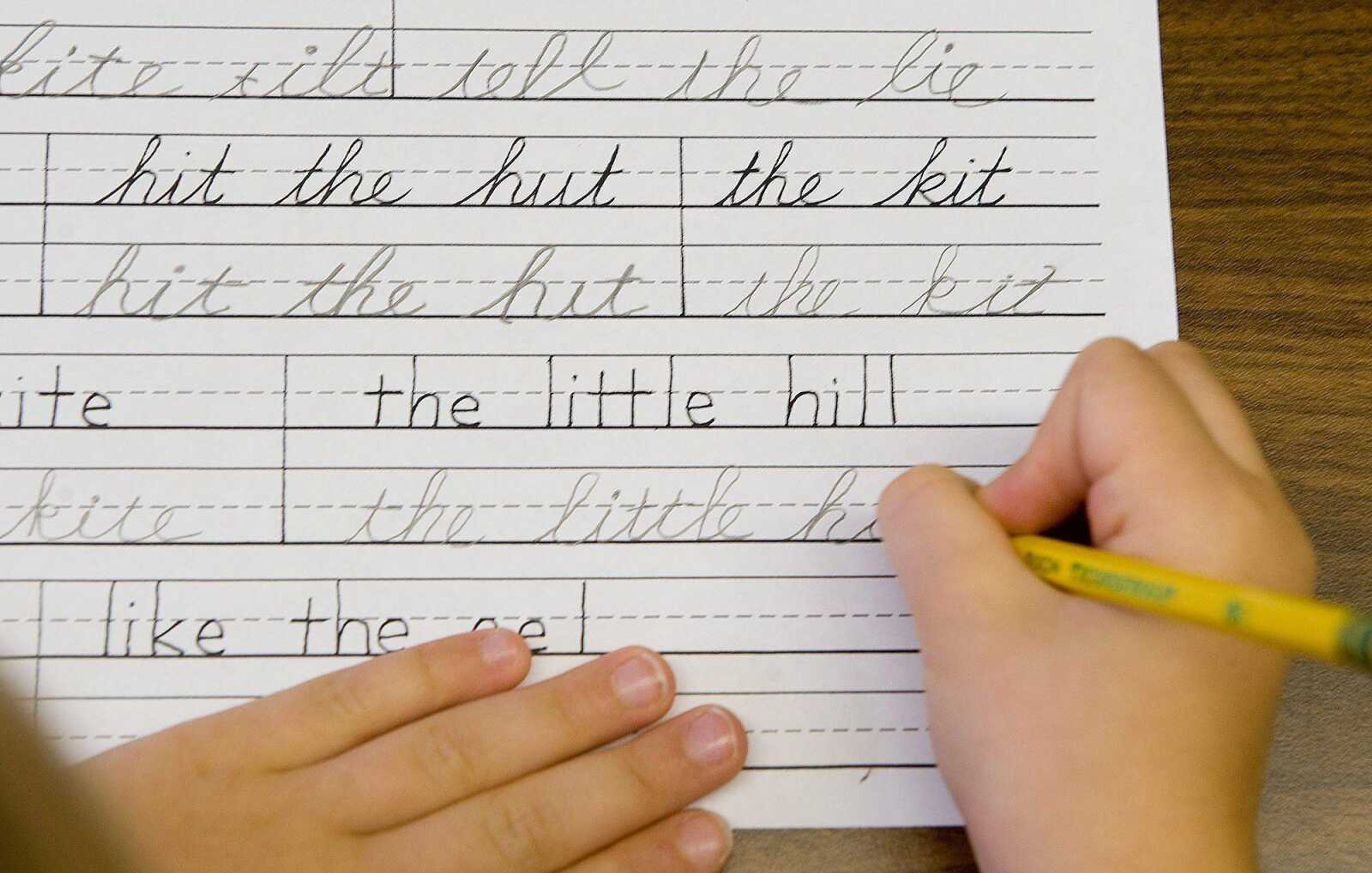Cursive writing may be fading skill in 21st century
CHARLESTON, W.Va. -- Charleston resident Kelli Davis was in for a surprise when her daughter brought home some routine paperwork at the start of school this fall. Davis signed the form and then handed it to her daughter for the eighth-grader's signature...
CHARLESTON, W.Va. -- Charleston resident Kelli Davis was in for a surprise when her daughter brought home some routine paperwork at the start of school this fall. Davis signed the form and then handed it to her daughter for the eighth-grader's signature.
"I just assumed she knew how to do it, but I have a piece of paper with her signature on it and it looks like a little kid's signature," Davis said.
Her daughter was apologetic, but explained that she hadn't been required to make the graceful loops and joined letters of cursive writing in years. That prompted a call to the school and another surprise.
West Virginia's largest school system teaches cursive, but only in the third grade.
"It doesn't get quite the emphasis it did years ago, primarily because of all the technology skills we now teach," said Jane Roberts, assistant superintendent for elementary education in Kanawha County schools.

Davis' experience gets repeated every time parents, who recall their own hours of cursive practice, learn that what used to be called penmanship is being shunted aside at schools across the country.
The decline of cursive is happening as students are doing more and more work on computers, including writing. In 2011, the writing test of the National Assessment of Educational Progress will require eighth- and 11th-graders to compose on computers, with fourth-graders following in 2019.
For some, cursive writing is a lifelong skill that shouldn't be lost.
That fear is not new, said Kathleen Wright, national product manager for handwriting at Zaner-Bloser, a Columbus, Ohio-based company that produces instructional material.
"If you go back, you can see the same conversations came up with the advent of the typewriter," she said.
Every year, Zaner-Bloser sponsors a national handwriting competition for schools, and this year saw more than 200,000 entries, a record.
"Everybody talks about how sometime in the future every kid's going to have a keyboard, but that isn't really true."
Few schools make keyboards available for day-to-day writing. The majority of school work, from taking notes to essay tests, is still done by hand.
At Mountaineer Montessori in Charleston, teacher Sharon Spencer stresses cursive to her first- through third-graders. By the time her students are in the third grade, they are writing book reports and their spelling words in cursive.
To Spencer, cursive writing is an art that helps teach them muscle control and hand-eye coordination.
"In the age of computers, I just tell the children, what if we are on an island and don't have electricity? One of the ways we communicate is through writing," she said.
But cursive is favored by fewer college-bound students. In 2005, the SAT began including a written essay portion, and a 2007 report by the College Board found that about 15 percent of test-takers chose to write in cursive, while the others wrote in print.
That was probably smart, according to Vanderbilt University professor Steve Graham, who cites multiple studies showing that sloppy writing routinely leads to lower grades, even in papers with the same wording as those written in a neater hand.
Graham argues that fears over the decline of handwriting in general and cursive in particular are distractions from the goal of improving students' overall writing skills. The important thing is to have students proficient enough to focus on their ideas and the composition of their writing rather than how they form the letters.
Data from the National Center for Education Statistics show that 26 percent of 12th graders lack basic proficiency in writing, while two percent were sufficiently skilled writers to be classified as "advanced."
"Handwriting is really the tail wagging the dog," Graham said.
Besides, it isn't as if all those adults who learned cursive years ago are doing their writing with the fluent grace of John Hancock.
Most people peak in terms of legibility in 4th grade, Graham said, and Wright said it's common for adults to write in a cursive-print hybrid.
"People still have to write, even if it's just scribbling," said Paula Sassi, a certified master graphologist and a member of the American Handwriting Analysis Foundation.
"Just like when we went from quill pen to fountain pen to ball point, now we're going from the art of handwriting to handwriting purely as communication," she said.
Connect with the Southeast Missourian Newsroom:
For corrections to this story or other insights for the editor, click here. To submit a letter to the editor, click here. To learn about the Southeast Missourian’s AI Policy, click here.










